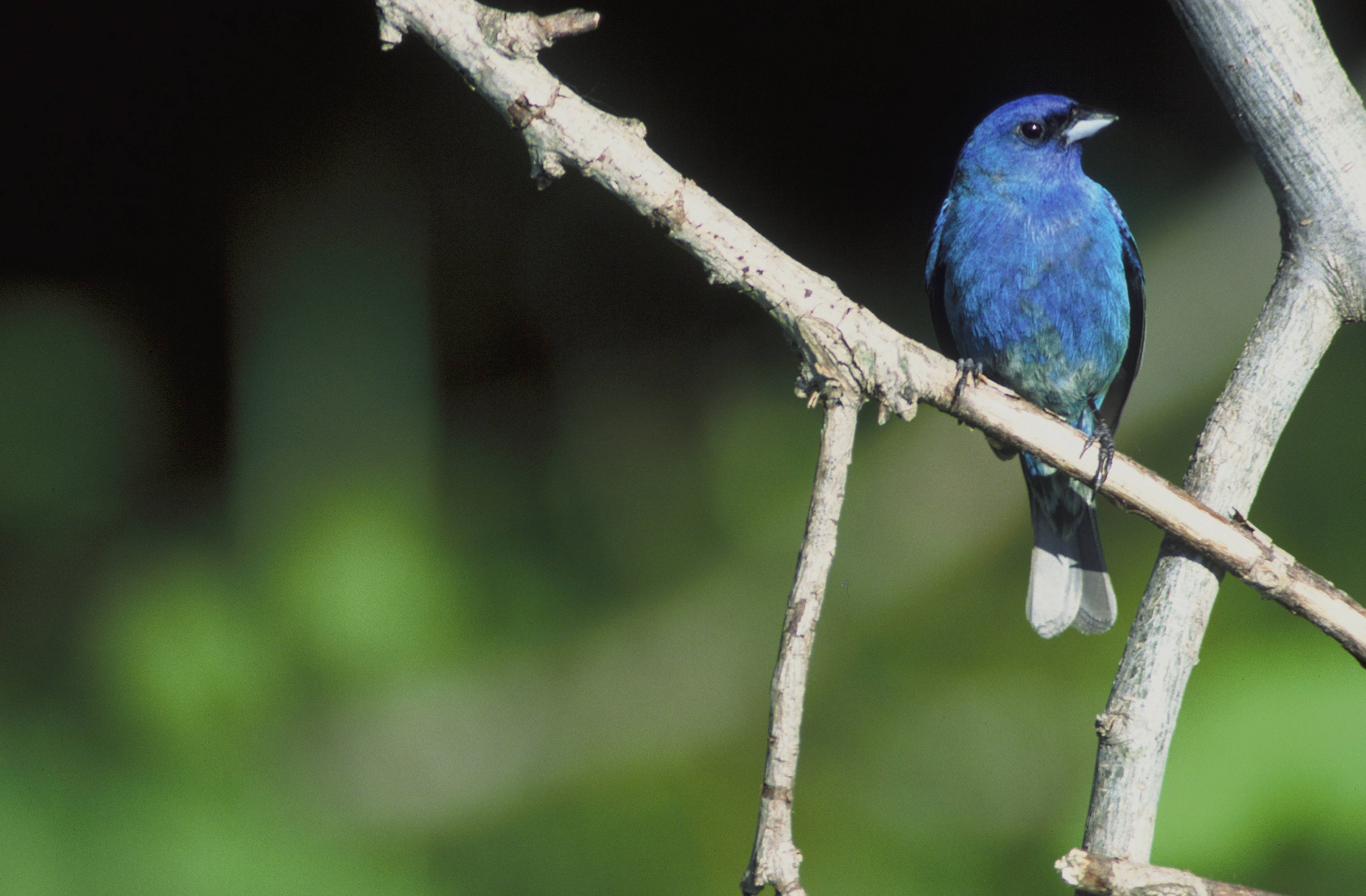 Image via Wikipedia
Image via WikipediaIn the spring they can travel thousands of miles to their breeding grounds at the top of Florida to the bottom of Canada and as far east as Maine and as far west as Nevada. They will stop in many yards on their journey looking to refuel. During migration they look for open grasslands and leafy trees similar to those in their winter habitat. Migration takes place in April and May and then again in September and October.
 Image via Wikipedia
Image via WikipediaIndigos like a variety of food, including small seeds, nuts, berries, insects, mosquitoes, flies, aphids, small spiders, buds, goldenrod, thistle, grasses, and herbs. At my feeders they like the Nyger Thistle and the No-Mess blend which has the sunflower chips, peanuts, and millet without the hulls.
The only way to get them to stay the whole summer is if you live in an area where they like to breed. Indigo buntings nest in brushy and weedy habitats along the edges of farmland, woods, roads, and railways. According to Birds of Michigan by Ted Black, “Raspberry thickets are a favored nesting location for many of our Indigo Buntings. The dense, thorny stems provide the nestlings with protection from many predators, and the berries are a convenient source of food.”
So if you live near a woodlot or bike trails you may see the birds year round. Otherwise appreciate these beautiful birds while they visit in the spring and fall.
Related Article:
Do We Have Indigo Buntings in Michigan? http://t.co/tUlMhMW

No comments:
Post a Comment